Isle of Man TT History (1907-1979)
Held on a small island off the west coast of England, The Isle of Man TT is recognized as one of the world's most challenging and dangerous motorcycle race courses.
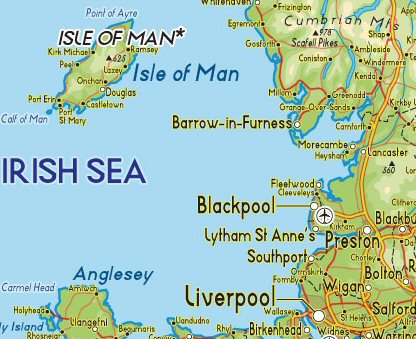
Since 1907, the TT (Tourist Trophy) has been run entirely on public roads, which are regularly used by Manx citizens the rest of the year. The motorcycle event is run in late May/early June each year.
Each lap of the course covers 37-3/4 miles (60 kilometers), with elevation changes ranging from sea level to 1,300 feet.
Beginnings
The TT first started in 1904 on mainland Great Britain, but an act of Parliament forbid road racing, even the organized kind, while a speed limit of 20-mph was unlikely to provide any excitement. These restrictions forced race organizers to look for a new home.
_________________________________________________
_________________________________________________
Sir Julian Orde, the Secretary of the Automobile Club of Great Britain and Ireland, headed to the Isle of Man in the belief that he would find a more welcoming home for organized road racing. After negotiations, Orde was granted his wish, and later that same year, the Gordon Bennett Eliminating Trial was introduced on the Island.
The early years of the TT featured some of the greatest names in motorcycle production, including Matchless and Norton.
First Official Isle of Man TT
Although the idea for a race event on closed roads was unpopular, the first race to be known as the Isle of Man TT took place in 1907.
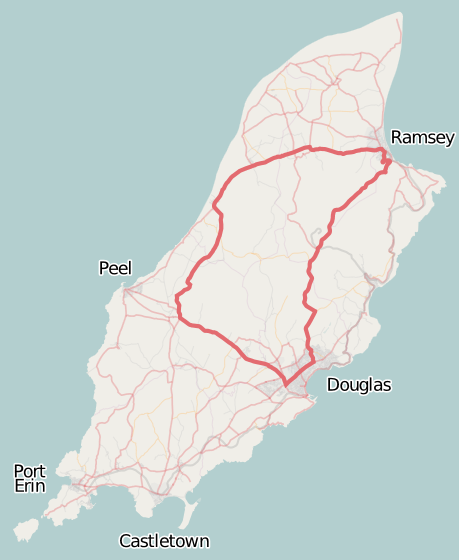
In the first race, overall victory went to Charlie Collier riding a single-cylinder Matchless. Rem Fowler's twin-cylinder Norton set fastest lap at 42.91 miles per hour.
*********************
Early Isle Of Man TT Main Motorcycle Events
Lightweight TT (250cc)
Junior TT (350cc)
Senior TT (500cc)
*********************
Although the event featured cars and motorcycles, for the first four years, bikes competed on an abbreviated circuit. This was due to the smaller single-cylinder engine bikes struggling to cope with the steep mountain climbs.
Motorcycles didn’t race the full, 37-3/4 mile Mountain Course until 1911. That year, the Indian Motorcycle factory race team finished 1st, 2nd, and 3rd.
*********************
The Isle of Man TT was not run during the first World War, but returned in 1920.
After WWI, the race grew in popularity, and began to attract more spectators and riders than ever before. Many believe that 1922 marked a real breakthrough with Tom Sheard, a Manxman, winning the 350cc class on an AJS.
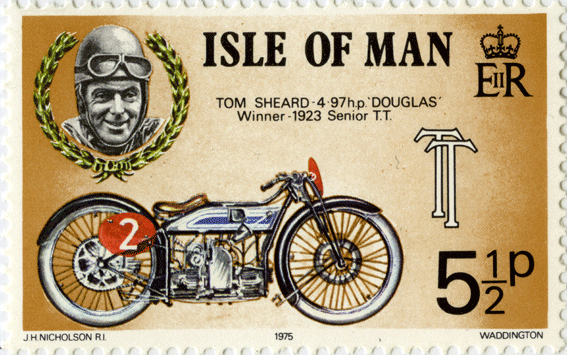
A year later, Sheard rode a Douglas motorcycle. His local course knowledge in the day's poor weather gave him his second TT Race win.
His winning Douglas motorcycle now resides in the Manx Museum.
*********************
The 1930's saw the TT become the most prestigious event on the calendar and also a shift in terms of winning bikes.
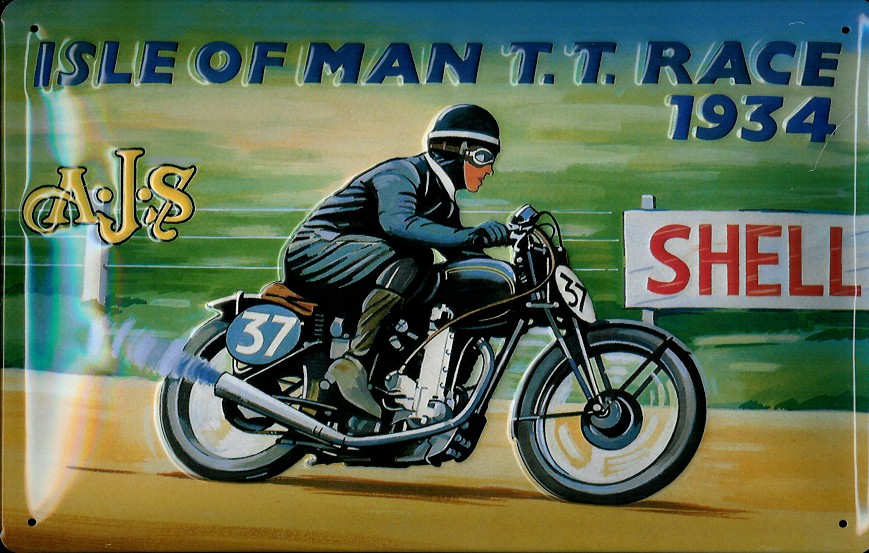
Up until this point, the likes of AJS, Sunbeam and Rudge had dominated, but they started to be eclipsed in the main by Norton, as well as overseas makes such as BMW and DKW.
*********************
Norton's Dominance
Of the 82 combined 350cc and 500cc Grand Prix and TT races held between 1931 and 1937, Norton won 66 of them.
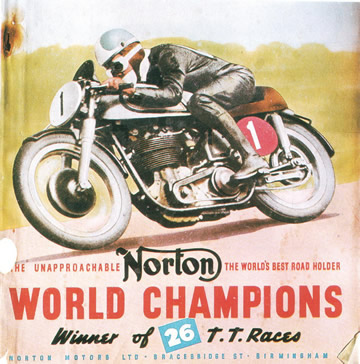
*********************
1939 Isle Of Man
With their riders wearing swastika insignias on their leathers, Germany sent three teams (BMW, NSU and DKW) to the Isle Of Man in 1939. For the Senior event, Georg Meier rode a BMW Type 255 RS-500, which featured a mechanical supercharger (kompressor). The 494cc engine produced 60 horsepower at 7,000 rpm.
Meier won the Senior TT race with an average speed of 89.38 mph, running at speeds up to 137 mph on the straights. Jock West (a Brit) also riding a kompressor BMW, completed the course just two minutes after, giving BMW an impressive one-two victory. Meier would be the first rider from outside Great Britain to win the Senior Tourist Trophy.
World War Two and Post WW2
Just three short months after the 1939 TT event, Britain and Germany were engaged in a terrible, costly war. The Isle of Man TT was not run during the years 1939 through 1946.
After World War 11, the IOM TT resumed again in 1947. Further upgrading with the course and new regulations followed. German motorcycle manufacturers were not allowed to race until 1949 due to post-war restrictions.
The 1950's marked the era when the TT evolved into the event that we know today. With World Championship status, top competitors from across the globe arrived to give the race more creditability than it had ever experienced. The classic bikes that had added so much prestige to the event throughout its history were now joined by a new range including Italian makes such as Mondial, MV Augusta and Gilera.
_________________________________________________
_________________________________________________
The 1960's saw some of the greatest motorcycle racers emerge. In 1961, Mike Hailwood became the first man in the history of the Isle of Man TT to win three races in one week - the 125cc, 250cc, and 500cc categories.
In 1967, Hailwood set a lap record of 108.77 mph, riding a Honda 500cc 4 cylinder. That record would stand for the next eight years. Hailwood's battles with Giacomo Agostini were to become features of the TT for years to come!
Two years later, Malcolm Uphill rode a Triumph Bonneville Thruxton around the TT at 100 mph, setting the first 100 mph production bike lap.
*********************
Slippery Sam Trident
In 1970, Malcolm Uphill rode a three-cylinder Triumph Trident nicknamed Slippery Sam, winning production bike lap speed once again, and taking fourth place in it's first year in the Production TT.

For the next five consecutive years (1971,1972, 1973, 1974, 1975) Tridents won first place with several different riders.
*********************
John Player Norton
Peter Williams, riding a John Player Norton with a semi-monocoque frame, won the Formula 750 Senior TT in 1973. He averaged speeds of 105 mph over the mountain course, winning by over three minutes ahead of the second place bike.
This would be the last banner year for the Norton factory race effort.
*********************
Mike Hailwood continued his impressive streak into the 1970's. After an 11-year hiatus from motorcycling, Hailwood, at 38-years-old, won the TT again in 1978, this time on a Ducati 900SS. In 1979, he returned once more to win his 14th and final TT.
Paying homage to Hailwood's championship win in 1978, Italian-built Ducati offered a replica bike to the public. Mounted to a 900-SS frame, the kick-start-only 864cc L-twin featured bevel gear-driven overhead cams.
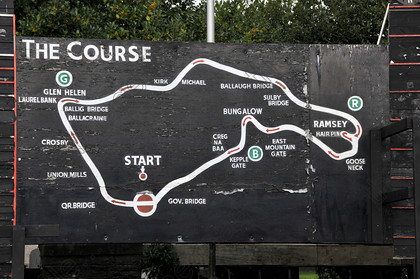
Year after year, the Isle of Man TT continues to be the most exciting motorcycle racing event in the world. Truly a thrilling spectacle!
*********************
Related Articles: